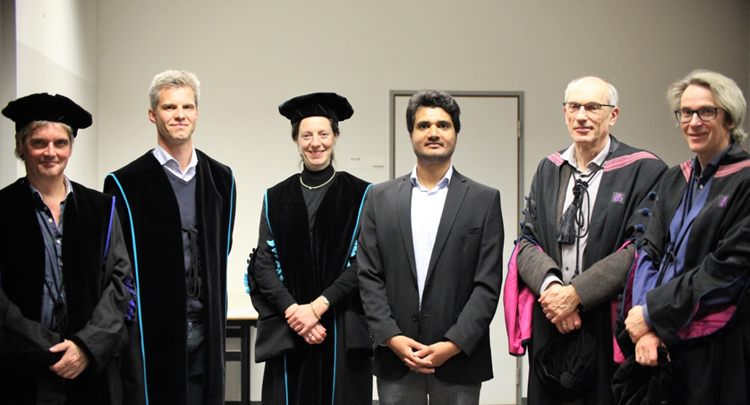Roeffaers Lab
Nanoscopy and catalysis
PhD Defence of Imran Aslam
Advanced optical detection of carbon nanoparticles

The air we breathe is full of microscopic particles. This particulate matter is very complex, both in size and composition. Different components of particulate matter contain metal oxides, silica dust, and soot particles. Soot particles are a major form of air pollution in the industrialized world. Every combustion engine that runs, barbecues and campfires that are lit, and unwanted (natural) fires release huge amounts of soot particles into the atmosphere.
Among various components of particulate matter, soot particles, such as 'black carbon' (black carbon, BC) and 'brown carbon' (brown carbon, BrC), not only make a very significant contribution to climate change, but there is also evidence that they have a negative impact on human and animal health. According to the Flemish Environment Agency, the average particulate matter concentration in Flanders is around 20 µg/m3 (2020), of which approximately 5-10% consists of soot particles. Our respiratory exposure to soot can be estimated at approximately hundreds of soot particles every minute! There is in fact more and more circumstantial evidence that these soot particles from the lungs are distributed throughout the body via the bloodstream. In contrast to the routine measurement of soot particles in (polluted) air, it is very challenging to specifically detect these small carbon nanoparticles, typically smaller than 1 µm, in (carbon-rich) biological material.
The main aim of this thesis included the development of novel linear and non-linear optical techniques for the qualitative and quantitative detection of soot particles in biological samples. In collaboration with Hasselt University, advanced laser techniques were developed that can specifically illuminate soot particles in biological samples and thereby generate a detectable signal from these soot particles. Specifically, this thesis shows that carbon nanoparticles emit a very unique, intense, and visible light signal when irradiated with near-infrared light that is invisible to us. In addition, this technique was further developed in combination with microfluidics to determine the size of carbon nanoparticles in (bio) fluid samples, e.g. human urine samples. It was further shown that different types of soot particles, e.g. BC and BrC, also exhibit a measurably different signal that can be distinguished using different color filters. Based on these findings in my thesis, it is now possible to locate, identify, and discriminate soot particles in biological samples, e.g. human biopsies. These results are a step towards the development of diagnostic tools that can allow a better understanding of the exact toxic effects of small carbon particles in human body.
Full text : https://lirias.kuleuven.be/handle/20.500.12942/703015
To enable comments sign up for a Disqus account and enter your Disqus shortname in the Articulate node settings.